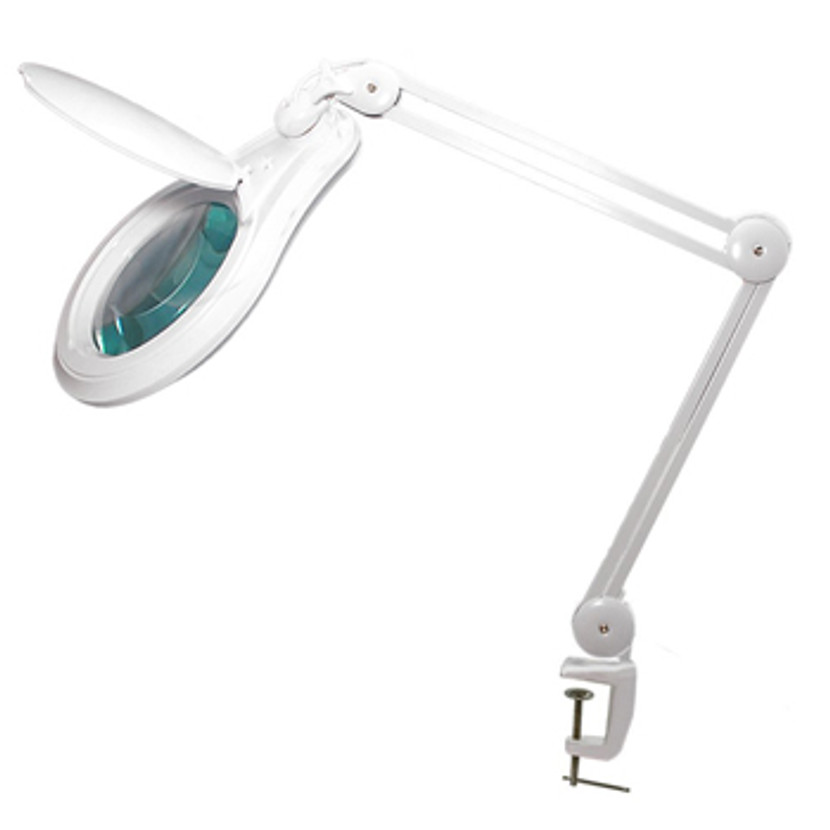Glossary of Microscope Terms for Beginners
We put together a list of vocabulary you will tend to see and hear in the world of microscopy.
Head: The upper part of the microscope that contains the eyepiece tube(s). There are different types of heads, monocular, binocular, trinocular and dual.
Monocular Head: A microscope head with one eyepiece tube. These are recommended for beginners since they are usually more cost effective. See our monocular microscopes here.
Binocular Head: A microscope head with two eyepiece tubes.These are more common microscopes used for professionals, beginners and hobbyists. Binocular head microscopes are used to describe any microscope with two eyepieces.
Trinocular Head: Available on both high and low power microscopes, trinocular heads have two eyepiece lenses (one for each eye) and a third port at the top for a camera and display screen. See all of our trinocular microscopes here.
Dual Head: A dual headed microscope has a single eyepiece lens on one side of the microscope and a different eyepiece lens on the opposite side of the microscope. This makes it easy for teachers to ensure their student is viewing the specimen correctly. There are also multi headed microscopes which can have up five or more microscope heads.
Compound/High Power: This term is to describe a microscope which is used to inspect specimen not visible to the naked eye and are on a microscope slide or in a petri dish. To be able to see the specimen light must be able to pass through it. Ex: bacteria, algae, blood cells and organ tissue cells. See all of our compound microscopes here.
Stereo/Low Power: This term is used to describe a microscope that is used to inspect bigger objects that won’t quite fit on a microscope slide. This microscope enables a 3-D view of the specimen visible to the naked eye. Ex: insects, shells, rocks and minerals. See all of our stereo microscopes here.
Body: This term is usually used for stereo or low power microscopes which holds the optical parts of the microscope in place, assuring continuous alignment. See all of our microscope bodies here.
Eyepiece Lens: The eyepiece lens is at the top of the microscope in which you look into to see the specimen. Standard eyepiece lenses are usually 10x but also are available in 5x, 15x, 20x and 30x magnifications. See all of our eyepiece lenses here.
Wide-field Lenses: These lenses have a large diameter and show a wide area of the field of view. This makes it easier to view the specimen for people with glasses. See our wide-field lenses here.
X: This means “times” or multiplication as in 10x or ten times magnification. This is used to describe the magnification of a microscope, which is determined by multiplying the power of the eyepiece lens by the power of the objective lens.
Objective Lens: The objective lens is the lens that is closest to the specimen or object you are inspecting. On high power microscopes you are able to change the magnification by moving from one objective lens to another. See all of our objective lenses here.
Stage: The stage is the flat plate where microscope slides are placed in order to observe the specimen. The stage on a compound microscope is used for inspecting smaller objects while the stage on stereo microscopes is for big objects. See our microscope stages here.
Mechanical Stage: A mechanical stage is able to move in different directions to adjust your microscope slide. The mechanical stage is composed of a slide holder which keeps your microscope slide in place. It also has two knobs which can be turned to direct the slide towards or away from you for different viewing. See all of our mechanical stages here.
Stand: A microscope stand is used with stereo or low power microscopes. This can make the microscope rotate around the post and also move it up and down. It can consist of a base with a single vertical post, or can branch off with an arm to move the entire microscope around. Shop all of our microscope stands here.
Base: The base is the bottom support of the microscope for both compound and stereo microscopes.
We hope this helped you understand more of the “microscope vocabulary”
If you need help finding the perfect microscope contact us at sales@bolioptics.com
Recent Posts
-
Sep 4th 2025 | Posted by BoliOptics
How to Measure Your Microscope Eyepiece for the Correct Reticle Size
Buying the right microscope reticle starts with one critical step: measuring the internal diameter o … -
Oct 3rd 2024 | Posted by BoliOptics
How to Calculate a Microscope Camera's Total Digital Magnification
To calculate the total magnification of a traditional microscope with eyepieces and objectives, you … -
Sep 14th 2023 | Posted by BoliOptics
How to Convert Diopters to Magnification
Diopter indicates the amount of curvature of a lens. The thicker the lens, the bigger the curvature. …

